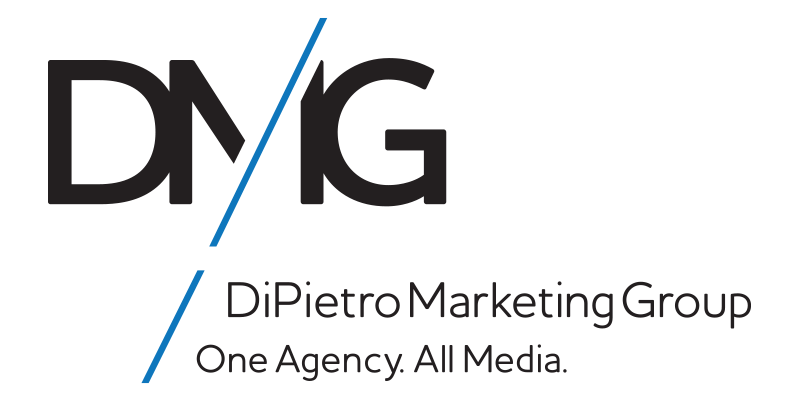I know half of my advertising is working, I just don't know which half.
Why Tracking ROI Properly Is Critical
Tracking ROI is important because it allows law firms to allocate (or reallocate) advertising dollars based off of which ad efforts are working and which are not.
A Good Understanding Of Your Legal Marketing ROI Will…
- Drive decision making processes as to where to spend your advertising dollars.
- Help marketing teams create successful marketing strategies and campaigns.
- Assist in Business Development strategies.
- Identify tools needed to help marketing succeed.
The Problem: you’re a great attorney, not a marketing analytics expert; you need clear insight as to what’s working and what’s not (as opposed to convoluted data segments and indicators as to performance).
To understand your firm’s marketing ROI, you need to go from tracking where leads are coming from to tracking where cases are coming from.
Introduction To ROI Tracking For Law Firms
What the managing partners see…
Using case management software, attorneys can easily tell how many paying clients were retained in a given time period.
What the marketing department sees…
Using analytics software, marketing teams can see how many leads (to a certain extent) were generated by different advertising efforts.
Issue…
In order to calculate marketing & advertising ROI, we need to be able to tell which leads actually turned into paying clients.
Example…
Marketing knows that 70 people contacted the firm from Google Ads, 40 came from SEO efforts, 10 came from social media, 15 came after seeing web video commercials.
The firm knows that it retained 50 new clients.
THE MILLION-DOLLAR QUESTION:
Which clients came from which marketing channel?
How So Many Firms Get This Wrong
There needs to be cohesion between all data sets throughout the conversion funnel from the time a prospect sees or interacts with an ad until the time they actually retain the firm. Many law firms do not integrate these data sets and therefore cannot track their clients back to the ad effort that drove the lead.
For example, people who have retained your firm who are listed in the case management database need to be tracked back through intake, through call tracking, to the marketing data set in order to tell what drove that client to first call your firm.
Without proper configuration, we cannot “connect the dots” from marketing and advertising touchpoints to the case management data in order to tell what is driving cases and then calculate ROI.
How to measure your firm’s ROI
You will need to track every piece of data from the initial ad that drove the call all the way through until the lead retains your firm. This tracking process will span:
Marketing Analytics
Call Tracking Software
An Intake Specialist and/or CRM Software
Case Management Software
STEP 1: Get Good Marketing Analytics Data
Marketing Analytics data will track the ad efforts that drove a prospect to contact your firm to a large extent.
STEP 2: Use Call Tracking Software
When integrated with Marketing Analytics software, call tracking software will help to match each individual lead with most recent advertising source that led to the call.
Ex: John Smith called on 1/15/2019 at 11:25a as a result of a Google Ads campaign.
STEP 3: Use An Intake Specialist
An intake specialist can help streamline the intake process for attorneys but also help clean up some of the call tracking data.
Ex: John Smith calls your firm from his cell phone but does not have his caller ID information set up, so his information is recorded in the call tracking software as such…
First Name: Verizon
Last Name: Customer
Phone: (856) 555-1234
Campaign: Google Ads
An intake specialist can overwrite that bad caller info by asking a couple of quick clarifying questions, then input the correct data.
For example, by finding out the caller’s correct information as well as asking how he or she heard about or found your firm, the intake specialist may find out that the caller had first seen your firm’s TV commercial before taking to Google to do more research on which lawyer to hire. She can then update the call record accordingly so it is more accurate…
First Name: John
Last Name: Smith
Phone 1: (856) 555-1234
Phone 2: (856) 555-5678
Campaign 1: TV
Campaign 2: Google Ads
STEP 4: Use CRM Software
If your firm is using CRM software, you can now track each individual lead from the time they first contacted your firm until they decide to retain (or not retain) your firm.
Not only is a CRM a great database for managing existing leads and lead data all in one place, but it also allows firms to:
- Make the intake process more efficient and personal by using custom intake forms, e-signatures, and automate certain processes in order to retain new clients.
- Automate tasks like e-mail follow-up and data entry to save you time.
- Measure which matters and clients drive your success by using advanced data reporting to identify the most valuable marketing efforts to your firm.
- Measure the quality of leads; which ad efforts tend to drive good leads vs which ad efforts drive not-so-good leads.
STEP 5: Integrate With Case Management Software
This software is most valuable to the attorneys and staff who use it on a daily basis – no doubt about it. However, it can also play a role in calculating law firm ROI, as it is a database of everyone who’s actually hired your firm.
Ex: John Smith is now a paying client and is listed as such in your Case Management Software. Marketing teams can now track John Smith as a paying client in the CMS back through the CRM / Intake data all the way back to the initial point of contact. Then, they can match that paying client with the marketing / advertising efforts that initially drove the client to call the firm.
This is the best way to really track the entire sales process from marketing effort to client in order to calculate your law firm’s ROI. For example…
Case Management Data shows John Smith paid our firm $2,000 for our services.
Call Tracking data matches him to the time and date of his first call.
Marketing Analytics data shows that he came in on a Google Ads search, but the notes left by the intake specialist show that he’d first seen our ad on TV.
Therefore, we know that TV and Google Ads played a role in landing John Smith as a client. We can use this same logic across entire data sets, factor in ad spend and revenue metrics and now calculate our firm’s ROI.
Final ROI Solution
Once everything is set up and configured properly, your firm will have software in place that will monitor information and collect data across the entire legal sales / conversion process.
Not only will everything be tracked, but all of the data will flow and be accessible across all of the data sets, across each section of the conversion funnel.
Before & After ROI Measuring Capabilities
BEFORE:
Marketing Reports Show…
- 30 leads from Google Ads
- 15 leads from SEO
- 15 leads from Social Media
- 20 leads from Web Video Commercials
- 10 leads from Legal Directories
Case Reports Show…
- 35 new clients
AFTER:
35 New Clients…
- 15 clients came from Google Ads
- 7 clients came from SEO
- 1 client came from Social Media
- 10 clients came from Web Video Commercials
- 2 clients came from Legal Directories
Now that you know which advertising efforts are really driving cases and not just leads, you can factor in the ad spend for each channel in order to calculate your firm’s Cost Per Case (aka Cost Per Acquisition) by individual marketing / advertising source.
If you’d like, you could even take it one step further and also factor in the revenue generated by each case vs the advertising source that drove the case compared to the total ad spend for each medium.
How Do I Integrate All Of These ROI Platforms?
There is currently no real out-of-the-box solution for this. Marketing teams can help integrate custom solutions for tracking leads, but the most difficult tie-in is undoubtedly with the case management software. Case management software was simply never built to track the original advertising medium that drove each new client.
That said, there are some things to look for if you are open to evaluating case management systems to better track ROI.
Please note: again, CMS software should be evaluated primarily on how well it will accommodate the needs of your attorneys and staff. Don’t choose a subpar CMS provider because it meets the needs of marketing.
However, that said, there are two things we recommend looking for:
- The ability for the CMS to integrate with something like a CRM (Clio, for instance).
- A CMS with open API which allows for IT to manually tie the CMS data into the CRM and Call Tracking data.
Both of the solutions above will help bridge the gap between the marketing data that shows where each lead came from and the case data which shows which clients were retained.
When in doubt, talk to your marketing and IT department(s). Lawyer SaaS solutions should be focused largely on legal tasks but legal marketers can help make sure the software your firm is using packs the most punch, especially when it comes to attributing ROI.
Getting This Right The First Time Matters. Here’s why…
Tracking Will Get Harder, Not Easier.
As your firm grows, it will become more difficult to manually track the source of each new client. If your firm is currently handling 10 new cases each month, a manual quarterly ROI report may not be unfathomable. However, when you grow to 20, 50, or 100 new clients per month, those manual reports become too cumbersome, time-consuming, and less accurate.
More Money. More Advertising. More Media.
As your firm grows over time, there will be more money on the line and an increasing importance to understand your returns.
Additionally, there will be more of a marketing mix; i.e. instead of needing to know the ROI of $5k / mo on PPC campaigns, you’ll need to understand the impact of $5k / mo. on PPC campaigns, $7k / mo. on TV campaigns, $3k / mo. on SEO campaigns, and $2k / mo. on YouTube advertising, and the intricate ways in which they are all working together.
You’re Married. (congratulations)
As time goes on, your staff becomes increasingly “married” to the software it uses. It may not be logistically feasible to switch Case Management Software providers after your employees have gotten comfortable using a particular platform over X number of years.
Additionally, as more time passes, more data accrues in your Case Management database. It can be difficult to move 5 years’ worth of case data, client records, case files, etc., should you decide that the CMS software you are using isn’t cutting it.
- Get good legal marketing analytics data.
Marketing Analytics data will track the ad efforts that drove a prospect to contact your firm to a large extent.
- Use call tracking software.
When integrated with Marketing Analytics software, call tracking software will help to match each individual lead with most recent advertising source that led to the call.
- Use an intake specialist.
An intake specialist can help streamline the intake process for attorneys but also help clean up some of the call tracking data and help ensure accuracy.
- Use CRM software.
If your firm is using CRM software, you can now track each individual lead from the time they first contacted your firm until they decide to retain (or not retain) your firm.
- Integrate with Case Management Software
This is a great database of all paying clients and needs to be connected with the CRM and marketing software to track the entire conversion funnel, from marketing / advertising source that drove the prospect, to medium that converted the prospect to a lead, and finally a lead to a paying client.










